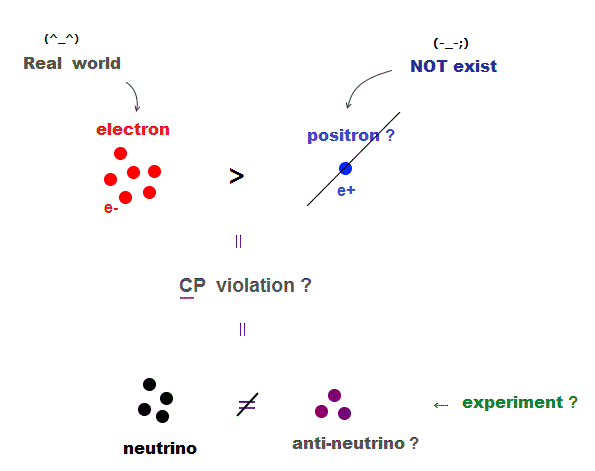
(Fig.1) Comparing neutrino and anti-neutrino is meaningless.

Our world consists only of "matter", and physicists claim antimatter disappeared. This asymmetry is called "CP violation".
They claim comparing neutrino and anti-neutrino can clarify this mystery.
But in fact, these neutrino experiments are meaningless and useless for us !
(Fig.2) A part of muon-neutrino changed into electron-neutrino ?
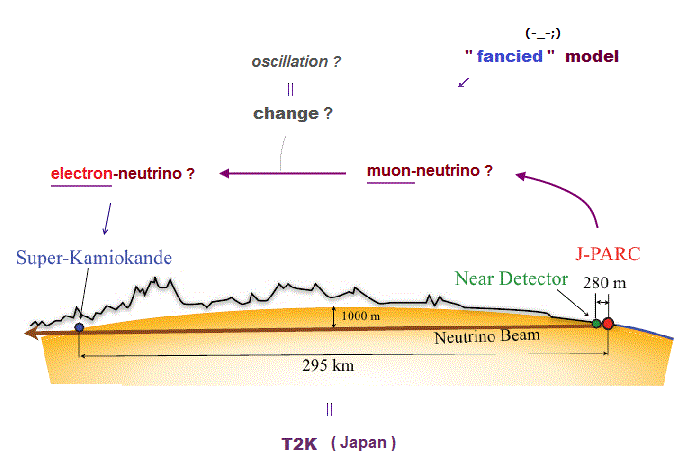
The present physics claims that there are three kinds of neutrinos (= tau-neutrino, muon-neutrino, electron-neutrino ). All of them are almost massless and neutral.
And they say a part of muon-neutrino can change into electron-neutrino (= neutrino oscillation ).
In T2K experiment, they produce "muon-neutrino" and try to detect the "electron-neutrino" at SuperKamiokande.
But in fact, this explanation relies on a fancied theory, each neutrino cannot be discriminated !
(Fig.3) After 6 years of experiments, they detected only 32 electron-neutrinos ?
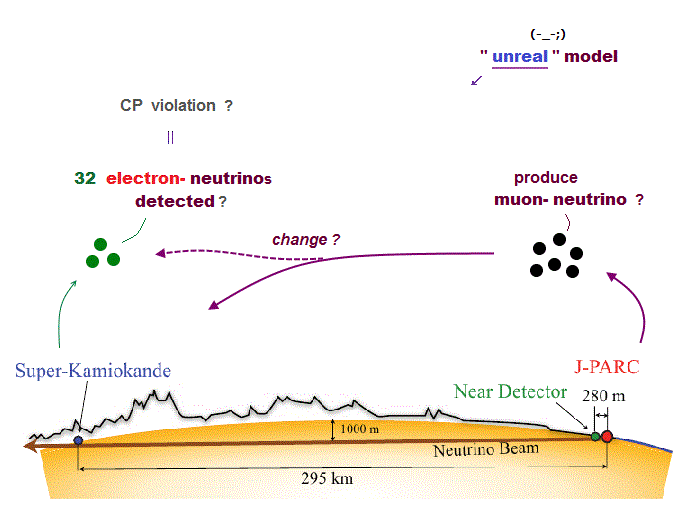
They expected that if there were no difference between matter and antimatter, their detector would have, after 6 years of experiments, seen 24 ( or 7 ) electron-( anti-)neutrinos.
Instead, they saw 32 neutrino and 4 anti-neutrinos arrive in their detector.This different probabilities of chaging muon- into electron- neutrinos proved the asymmetry between matter and antimatter ? But these experiments are based on "fancied" theory.
In fact, we cannot discriminate between neutrino and anti-neutrino, between electron-neutrino and muon-neutrino. So meaningless.
(Fig.4) Proton's crash into carbon atom produces (anti-) muon-neutrino ?
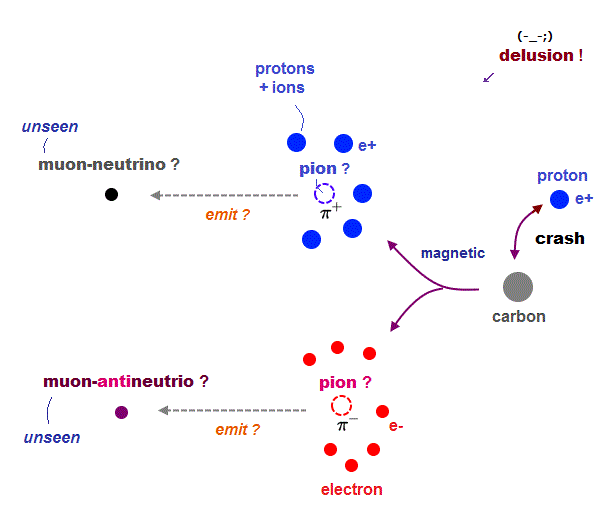
How can they produce neutrino ? The point is we cannot directly discriminate between neutrino and anti-neutrino. They have to rely on some "artificial" model.
In T2K, physicists accelerate protons to almost light speed and crash them into carbon graphite, and discriminate positive and negative ions under magnetic field.
They claim only a small part of them includes unstable pions. Positive pions (= π+ ) decays into muon and neutrino, and negative pion decays into anti-neutrino.
This is just a speculation, because we cannot see "ghost-like" neutrino itself and cannot discriminate neutrino and antineutrino directly.
(Fig.5) Muon-neutrino emits "sharp light" interacting with water ?
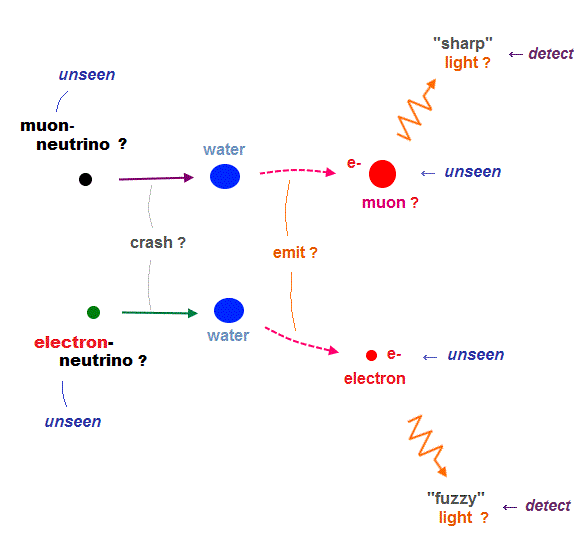
Detectors at SuperKamiokande cannot discriminate muon-neutrino and electron-neutrino. All they can detect is classical "light".
They claim when muon-neutrino hits water molecule, it emits "sharp" Cherenkov light, and electron-neutrino emits "fuzzy" light ( this p.49 ).
Whether the emitted light shows "sharp" or fuzzy patterns depends on the interaction and energy of each particle, NOT on whether it is a muon or electron !
They cannot detect muon and electron themselves in these experiments.
So discriminating muon-neutrino from electron-neutrino depends on very far-fetched (= imaginary ) idea, and lacks physical evidence.
(Fig.6) They must rely on artificial, fake model.
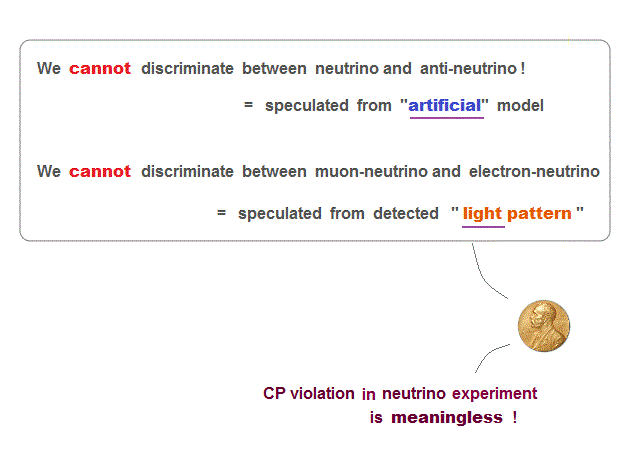
Neutrino is ghost-like, and almost all neutrinos slip away from detectors. Discriminating neutrino and anti-neutrino needs some "artificial" model.
So it is impossible to prove difference between matter and antimatter by these doubtful neutrino experiments.
Physicists all over the world are wasting money and time in meaningless experiments to seek "fanciful" theory, forever.
(Fig.7) Pion instantly decays into muon, which produces "different neutrinos"
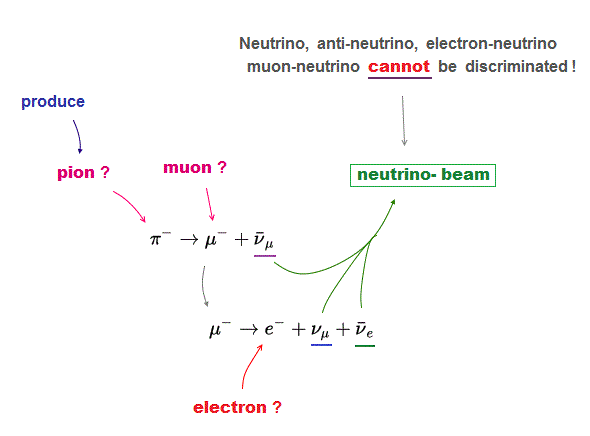
In fact, picking up a single kind of neutrino (= muon-neutrino ) is impossible. Their neutrino beams always includes all kinds of neutrinos ( this p.2 )
For example, negative pion (= π- ) decays into muon and "anti-muon-neutrino" (= bar-νν ) instantly. And the muon decays into electron and "electron-neutrino" (= νe ).
So these neutrino experiment to prove the difference between matter and antimatter cannot be trusted at all from the beginning.
(Fig.8) Muon emits "150000 times electron mass W boson" ? = unreal !
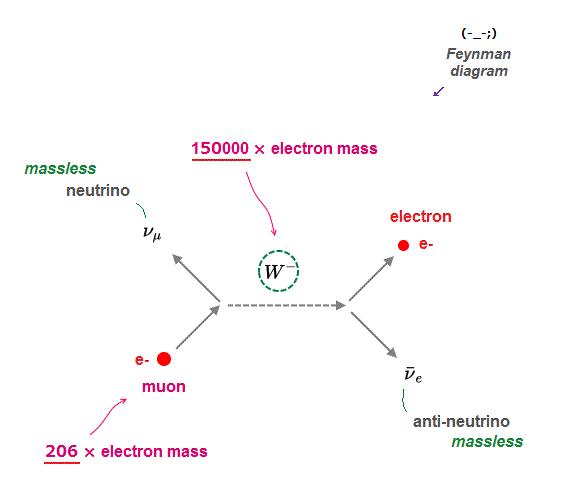
In fact, these muon and pion decay into neutrino depends on unrealistic model with weak force.
They claim the muon is about 206 times mass of electron. Feynman diagram claims this muon can emit very heavy W boson !
Surprisingly, this W boson is about 150000 times the electron mass (= 80 times proton mass ) !
It's impossible that a "small-mass" particle emits a much "larger-mass" particle, because it violates energy conservation law. This W boson is one of unreal virtual particles.
(Fig.9) Mass → massless violates "momentum" conservation !
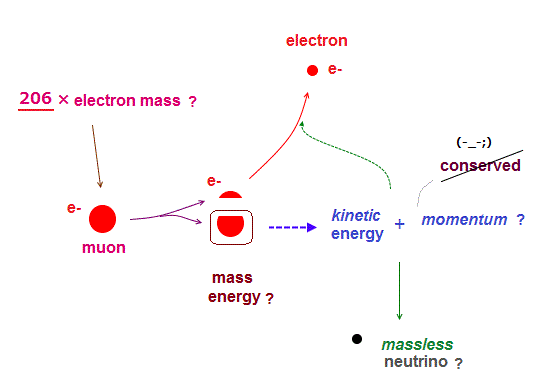
All physical phenomena have to obey conservation of total energy and momentum. But muon ( and pion ) decay into smaller particles disobeys this momentum conservation.
Because the ratios of momentum to energy are different in particles with "different masses".
When muon decays into smaller electron and massless neutrino, a large part of muon mass must change into "massless energy" through Einstein mc2.
This "massless energy" cannot push massive electron, due to their different ratio of momentum to energy. So these decays are unreal.
(Fig.10) Only electron, proton, light, neutrino are real
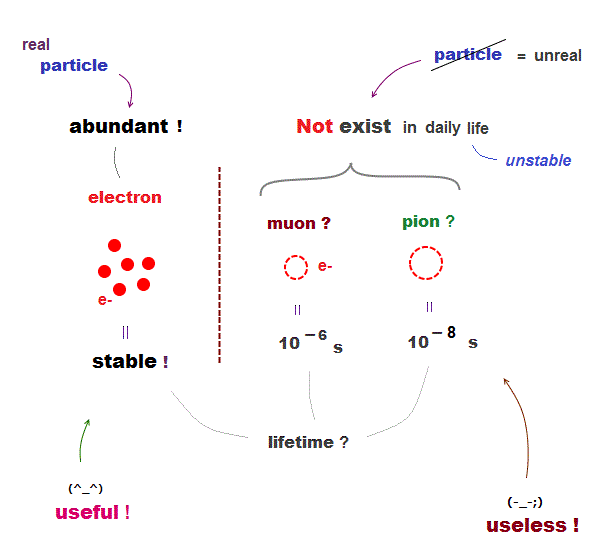
The current model claims that leptons include three particles, electrons, muon and tau, and a pion consists of two quarks,
But this particle theory is nonsense and describes NO realistic world.
Only electron, proton, light and neutrino are stable and cause "real" phenomena.
Other elementary particles are too unstable, instantly decaying into other things, and fractional-charge quarks cannot be isolated, so meaningless for us.
It is safe to say these too unstable muon and pion are NOT real particles but just a "artifact" seen inside many scattered real particles.

2016/8/19 updated. Feel free to link to this site.